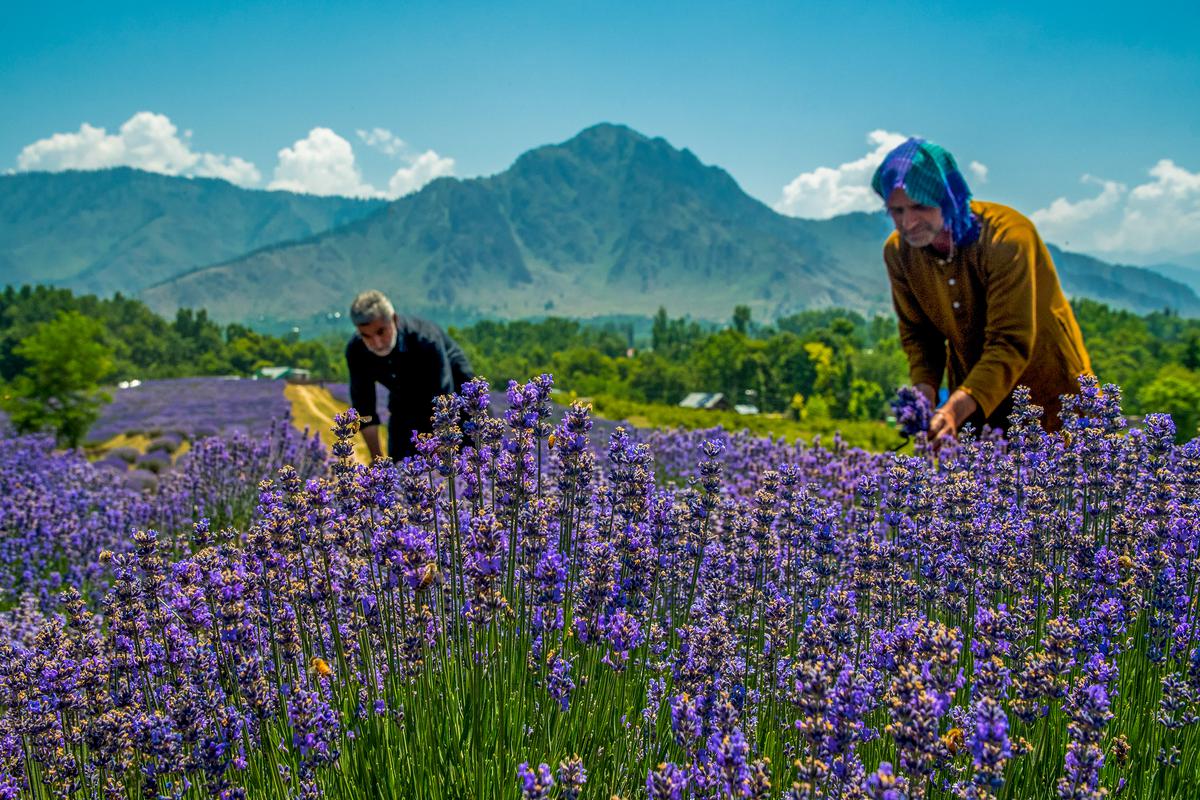Table of contents
The tribal communities of Odisha have found it challenging to sustain their livelihood through traditional agriculture due to inconsistent rain and scarce natural resources.
- They are now turning to high-value aromatic crops and floriculture as a means to enhance their livelihood.
Introduction of Aromatic Crops
- The introduction of aromatic crops such as lemongrass and mint has been quite successful in Nabarangpur district.
- The Central Institute of Medicinal and Aromatic Plants (CIMAP) in Lucknow has been instrumental in introducing different aromatic plants suitable for the region.
Distillation Units
- Three improved distillation units have been installed to process lemongrass oil, providing additional income through byproducts of oil distillation.
High Returns and Diversification
- Individuals from the Gond tribe, have seen substantial financial gains from lemongrass farming, earning more than 1 lakh in a year and expecting a guaranteed return of 1 lakh annually.
Aromatic Plant Mission by CSIR
- By the end of 2023, the CSIR-Aroma Mission aims to reach 26 out of 30 districts in Odisha.
- It has already planted aromatic crops across many hectares and installed several distillation units producing a significant quantity of aromatic oil.
Repelling Elephants
- Crops like lemongrass also serve a dual purpose by repelling elephants, which is beneficial to farmers in areas where human-wildlife conflict is common.
Future Potential
- The National Botanical Research Institute, another CSIR laboratory, has been credited with introducing these crops, and there is a huge demand for aromatic plants in the market.
- Geographical Expansion: Only 13 districts in Odisha have been covered so far, indicating potential for further expansion.
Challenges
- Despite the evident benefits, the adoption of new agricultural practices poses challenges such as the need for skill development, market access, and the initial reluctance to transition from traditional crops.
- There is a need for comprehensive policy support, including subsidies, training in new agricultural techniques, and assistance in building a robust supply chain.
The adoption of aromatic crops provides a viable alternative to traditional farming and offers solutions to human-wildlife conflicts.
We can't clear UPSC for you.
But with our personalised mentor support, you'll be ready to do it yourself.
In India, tribal farmers have been traditionally involved in the cultivation of a variety of aromatic crops, apart from lemongrass and mint.
These crops are not only valuable for their use in perfumery and flavoring industries but also play a role in traditional medicine and have significant export potential.

Aromatic crops grown across India
- Patchouli (Pogostemon cablin): Known for its strong fragrance and essential oil used in perfumery, patchouli is cultivated in various parts of India, including northeastern states where tribal communities engage in its farming.
- Vetiver (Chrysopogon zizanioides): Vetiver grass is known for its aromatic roots, which are used in the cosmetic industry and also for soil conservation. It is grown in several states, including Tamil Nadu and Kerala.
- Basil/Tulsi (Ocimum spp.): Holy basil or tulsi is grown for its essential oil and is used in religious rituals, Ayurvedic preparations, and herbal teas. Tribal farmers, particularly in the central and northern Indian states, cultivate basil.
- Citronella (Cymbopogon nardus): This grass is cultivated for citronella oil, which is used as a natural insect repellent and in fragrances. It is grown in states like Assam and other northeastern regions.
- Palmarosa (Cymbopogon martini): Palmarosa oil, derived from this grass, is used in soaps, cosmetics, and perfumes. It is commonly cultivated in Maharashtra, Karnataka, and Madhya Pradesh.
- Rosemary (Rosmarinus officinalis): Used for its aromatic oil in the culinary and cosmetic industries, rosemary is being cultivated in the hilly regions of India, including Uttarakhand and Himachal Pradesh.
- Geranium (Pelargonium graveolens): The essential oil of geranium is used in aromatherapy and the perfume industry. It is grown in regions with temperate climates, such as Himachal Pradesh and Uttarakhand.
- Jasmine (Jasminum spp.): Known for its highly fragrant flowers, jasmine is cultivated for its essential oils and as an ornamental plant. It is widely grown in Tamil Nadu and Karnataka.
- Chamomile (Matricaria chamomilla): Chamomile flowers are used to make herbal infusions and essential oil for medicinal and cosmetic purposes. It is increasingly being cultivated in regions like Rajasthan and Madhya Pradesh.
- Ylang-Ylang (Cananga odorata): Though not very common, ylang-ylang is known for its fragrant flowers and essential oil used in high-end perfumes. It has potential for cultivation in the Andaman and Nicobar Islands and other coastal regions.
- Lavender (Lavandula spp.): Cultivated for its essential oil and dried flowers, lavender farming is promoted under the Aroma Mission by CSIR and the Institute of Himalayan Bioresource Technology (IHBT).
- Cultivation is particularly encouraged in the Indian states of Jammu and Kashmir, Himachal Pradesh, and Uttarakhand, where the climate is conducive to its growth.
- It is known for its soothing fragrance and is used in making perfumes, soaps, and sachets, as well as in culinary and medicinal applications.

The cultivation of these aromatic crops offers tribal communities a path toward economic development through higher income from niche markets.
Additionally, many of these crops have ecological benefits such as soil conservation, pest management, and biodiversity preservation.
However, the successful cultivation and marketing of these crops require support in terms of agricultural extension services, access to markets, and value addition through processing and distillation facilities.
Previous Post